Ethereum blockchain and its use in practice
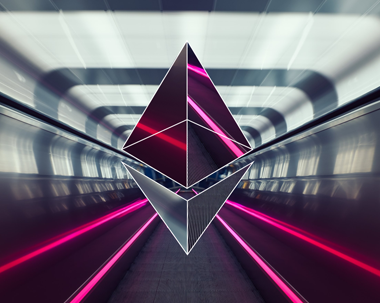 Hi, Habr! Connected Wirex , finteh startup that provides payment services and remittances using blockchain, minimizing the bank intermediation. And we continue the series of articles on Ethereum and related projects. In previous releases, we talked about how Ethereum came to the forefront of the blockchain world, as well as how the decentralized autonomous organization The DAO (which, by the way, was cracked last Friday)and now will be closed with the return of funds to investors). Today we talk about the practical application of Ethereum. But first, a few words about the blockchain in general and how Ethereum allowed the blockchain to turn from a distributed transaction database into a part of a general-purpose computing peer-to-peer network. It seems to us that this process was described quite well by the founder of Plex.ai, Terek Judy, on a Microsoft blog.
Hi, Habr! Connected Wirex , finteh startup that provides payment services and remittances using blockchain, minimizing the bank intermediation. And we continue the series of articles on Ethereum and related projects. In previous releases, we talked about how Ethereum came to the forefront of the blockchain world, as well as how the decentralized autonomous organization The DAO (which, by the way, was cracked last Friday)and now will be closed with the return of funds to investors). Today we talk about the practical application of Ethereum. But first, a few words about the blockchain in general and how Ethereum allowed the blockchain to turn from a distributed transaction database into a part of a general-purpose computing peer-to-peer network. It seems to us that this process was described quite well by the founder of Plex.ai, Terek Judy, on a Microsoft blog. In 2009, Bitcoin was launched, a database whose work is based on a new data structure, called the blockchain.
A blockchain is a logically related sequence of information blocks, each of which contains data about a group of transactions and a link to the previous block. This allows you to tie together all ever completed transactions. The structure is copied to all nodes (computers) of the system, which allows each participant to have reliable information about all transactions without any need to receive it from a centralized source.
Decentralization
 The blockchain architecture is designed in such a way that the database continues to grow as long as the nodes continue to offer and confirm new blocks, regardless of the number of participants joining or leaving the network. The very fact that the existence of a database does not depend on a certain central node turns it into an independent and almost completely resistant to forgery or destruction system. Integrity and authenticity of transactions entering the blockchain are guaranteed using cryptographic techniques to effectively detect any incorrectly added to the system or artificially modified transactions. This hidden from the user's eyes magic makes Bitcoin work possible.
The blockchain architecture is designed in such a way that the database continues to grow as long as the nodes continue to offer and confirm new blocks, regardless of the number of participants joining or leaving the network. The very fact that the existence of a database does not depend on a certain central node turns it into an independent and almost completely resistant to forgery or destruction system. Integrity and authenticity of transactions entering the blockchain are guaranteed using cryptographic techniques to effectively detect any incorrectly added to the system or artificially modified transactions. This hidden from the user's eyes magic makes Bitcoin work possible.The emergence of new blocks
 In order to control the addition of new blocks with transactions to a common chain, the system uses a special mechanism, the essence of which is that each node offering a new block must solve a problem that will require considerable computational power from it. The complexity of this task is dynamically regulated in such a way that it takes about 10 minutes on average each time to solve it. This process is called mining.
In order to control the addition of new blocks with transactions to a common chain, the system uses a special mechanism, the essence of which is that each node offering a new block must solve a problem that will require considerable computational power from it. The complexity of this task is dynamically regulated in such a way that it takes about 10 minutes on average each time to solve it. This process is called mining. Whenever a node solves a problem and proposes a new block with all the transactions included in it, it is awarded a number of new Bitcoins, which it can use to cover the costs associated with solving the problem (computing equipment, electricity and other transaction costs).
Beyond Bitcoin
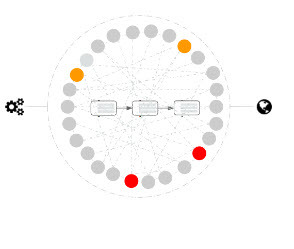 In addition to decentralization, the Blockchain architecture also allows for a high level of security. This combination is very useful when designing computer systems, since it allows you to scale applications and minimize the requirements for a central infrastructure. Despite the fact that the Bitcoin network was the first successful example of using the blockchain architecture, soon after its appearance, many developers began to study the possibility of using it to perform other types of transactions.
In addition to decentralization, the Blockchain architecture also allows for a high level of security. This combination is very useful when designing computer systems, since it allows you to scale applications and minimize the requirements for a central infrastructure. Despite the fact that the Bitcoin network was the first successful example of using the blockchain architecture, soon after its appearance, many developers began to study the possibility of using it to perform other types of transactions.Peer to Peer Network
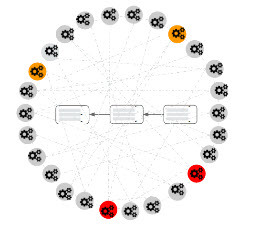 Despite all the advantages of decentralization and a high level of security of the blockchain, its use is convenient only for solving the problem of transferring the balance between two accounts. The Ethereum project was created to develop the necessary tools that could allow the blockchain to become a part of the general-purpose peer-to-peer computing network from the distributed transaction database. Ethereum is based on a virtual machine called Ethereum Virtual Machine (EVM), which allows you to execute programmed instructions stored on the blockchain.
Despite all the advantages of decentralization and a high level of security of the blockchain, its use is convenient only for solving the problem of transferring the balance between two accounts. The Ethereum project was created to develop the necessary tools that could allow the blockchain to become a part of the general-purpose peer-to-peer computing network from the distributed transaction database. Ethereum is based on a virtual machine called Ethereum Virtual Machine (EVM), which allows you to execute programmed instructions stored on the blockchain.Blockchain storing states and transactions
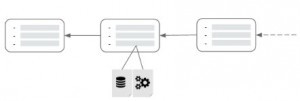 To add the ability to execute programs, the blockchain was modified in such a way that each block of it now contains not only data on the latest transactions, but also the current state of the programs, called smart contracts. Information on the status of contracts is updated with the addition of a new block according to the recorded transaction data. As a guarantee that the instructions provided to the programs will not be executed forever, a special restriction was introduced: the initiating contract party must pay special signs of monetary value, the number of which depends on the number of instructions and the level of consumption of the system’s memory contract.
To add the ability to execute programs, the blockchain was modified in such a way that each block of it now contains not only data on the latest transactions, but also the current state of the programs, called smart contracts. Information on the status of contracts is updated with the addition of a new block according to the recorded transaction data. As a guarantee that the instructions provided to the programs will not be executed forever, a special restriction was introduced: the initiating contract party must pay special signs of monetary value, the number of which depends on the number of instructions and the level of consumption of the system’s memory contract.Contract Accounts
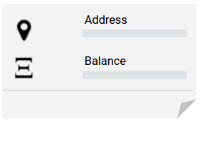 Each contract in the blockchain has a permanent address assigned to it at the time of creation and allowing it to be identified in the system. Each contract contains a balance, expressed in the form of a certain number of major currencies of the Ethereum network, called ether.
Each contract in the blockchain has a permanent address assigned to it at the time of creation and allowing it to be identified in the system. Each contract contains a balance, expressed in the form of a certain number of major currencies of the Ethereum network, called ether. If the contract does not include any program instructions, it acts as an account that has an address and balance. Accounts can exchange ethers with other accounts or contracts.
Contracts in the form of decentralized executable programs
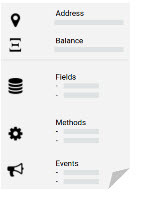 Each contract requires ether to be executed. This measure is intended to exclude situations with the endless operation of programs, since their execution stops as soon as the ethers selected during the call end. The contract call itself also requires a small amount of ether, which ultimately goes to the node that succeeds in successfully sending the next block to the blockchain. Nevertheless, it is possible to directly send a certain amount of ether to a contract at the time of its call to transfer the balance, for example, for the purpose of payment.
Each contract requires ether to be executed. This measure is intended to exclude situations with the endless operation of programs, since their execution stops as soon as the ethers selected during the call end. The contract call itself also requires a small amount of ether, which ultimately goes to the node that succeeds in successfully sending the next block to the blockchain. Nevertheless, it is possible to directly send a certain amount of ether to a contract at the time of its call to transfer the balance, for example, for the purpose of payment.The execution of certain actions of the program is possible due to the transfer of parameters to the methods of program instructions. The execution of the method can change the state of the contract by adjusting the values of one or more of its fields. A contract may also have a set of events used to notify interested parties of the results of a particular event throughout the duration of the contract. By default, the life of any new contract in the system is unlimited. However, when creating a contract, its initiator may set the possibility of self-destruction when, after a certain time or certain conditions have been fulfilled, the contract ceases to exist, and its entire ether balance is transferred to another account.
Messaging and files
 In addition to a special virtual machine for executing contract logic, the Ethereum project also introduced two additional protocols that implement support for peer-to-peer messaging and static files. The peer-to-peer distributed messaging protocol is called whisper. It provides users with excellent opportunities for personal, secure communication, with support for sending messages to one or more recipients and sending broadcast messages. The peer-to-peer protocol for exchanging static files is called swarm. It offers a new, motivation-based approach to placing static content for other members of the network with the ability to efficiently share files.
In addition to a special virtual machine for executing contract logic, the Ethereum project also introduced two additional protocols that implement support for peer-to-peer messaging and static files. The peer-to-peer distributed messaging protocol is called whisper. It provides users with excellent opportunities for personal, secure communication, with support for sending messages to one or more recipients and sending broadcast messages. The peer-to-peer protocol for exchanging static files is called swarm. It offers a new, motivation-based approach to placing static content for other members of the network with the ability to efficiently share files.Decentralized messaging
 Whisper is a peer-to-peer protocol for confidential messaging with a short lifespan. The message header (subject) in Whisper is hashed, and the messages themselves can be encrypted with keys to protect the data. Indirect support for broadcast and group broadcasting is included. Designed for a weak Internet channel and high data transfer delays. Provides the ability to use masks / filters for more efficient search for topics of interest (titles) without giving out their specific name.
Whisper is a peer-to-peer protocol for confidential messaging with a short lifespan. The message header (subject) in Whisper is hashed, and the messages themselves can be encrypted with keys to protect the data. Indirect support for broadcast and group broadcasting is included. Designed for a weak Internet channel and high data transfer delays. Provides the ability to use masks / filters for more efficient search for topics of interest (titles) without giving out their specific name.Motivated file sharing
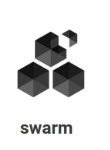 Swarm's work is based on using the main advantages of the Ethereum infrastructure - contracts and ethers. Files are divided into parts stored on network nodes. To keep track of the sent and received parts of files, the nodes use a special accounting protocol, and the activity of the nodes is paid for by micropayments, a measure designed to encourage cooperation between them.
Swarm's work is based on using the main advantages of the Ethereum infrastructure - contracts and ethers. Files are divided into parts stored on network nodes. To keep track of the sent and received parts of files, the nodes use a special accounting protocol, and the activity of the nodes is paid for by micropayments, a measure designed to encourage cooperation between them. After examining the complex device Ethereum sometimes you can ask the question: "And why is it all?". The Around The Block team has collected practical examples of Ethereum.
Sometimes it is not easy to talk about specific cases of its use, even for those who understand the concepts of the blockchain, Ethereum and smart contracts. Therefore let's consider this question more attentively.
The main themes of the examples cited here are the minimization or complete elimination of trust, the improvement of certain areas of human activity and revolutionary ideas. During the reading, pay attention to how simply by getting rid of intermediaries, the question of payment of operating commissions related to trust and reputation, as if by itself, disappears and how the described changes jeopardize established business models in a number of industries. However, it should also be borne in mind that many of the described applications are at a very early stage of development and it is not possible to say now which of them will “take off” and which ones fail.
Working projects
Payment systems
The main case of Bitcoin does not lose its relevance in the case of Ethereum. There are a lot of controversies about using ether as a currency or a means of preserving capital, but at the moment Ethereum banknotes can be and in fact are actively used as a tool to transfer value. Payments are checked by all other participants in the network (nodes or miners), and records about them are recorded in the register, changing records in which after the fact, as in the Bitcoin blockchain, is impossible. It is this application of blockchain technologies that is fundamental and in the case of our Wirex project , more than 100 thousand users use the service to send money to each other and withdraw digital currencies through our bank card.
Investing in gold
Digix Teamdeveloped a way to allow everyone to purchase gold in the form of tokens, information about which is recorded in the Ethereum blockchain. Ask yourself how easy it is (and without excessive costs) to buy gold, say, for $ 500 right now? With Digix you can instantly convert your fiat money or ether into gold tokens provided with real reserves of Singapore gold and cryptographically associated with them. Tokens can be exchanged for real gold at any time, even in case of Digix bankruptcy. No brokers, banks or partial reservations, almost zero commissions, immediacy of operations and security. And now think, is it worth stopping only on gold? Or you can do the same for trading other precious metals? With diamonds? Oil? Oranges?
Crowdfunding
Kickstarter, Indiegogo and other similar platforms have been dominating crowdfunding for several years now. They help startups present their idea to a wide audience and set a fundraising goal. If successful, Kickstarter takes 5% of the profits and transfers the remainder to the startup. As part of the Ethereum blockchain, a startup can also present an idea and set a fundraising goal. However, in this case, he does not need to pay any commissions: a smart contract will automatically send money to a startup based on the results of a successful company without any mediation fees.
Financial Management
In early May, the DAO launched, breaking the record of all crowdfunding companies ever held. Although almost after the end of the crowdfunding campaign, The DAO was attacked and will now be closed (funds will naturally be returned to investors), but they have already announced the launch of a new decentralized autonomous organization that will take into account the mistakes of its predecessor. Essentially, The DAOIt is a decentralized venture fund that relies on the “wisdom of the crowd” to make investment decisions. The “crowd” is played by all investors who receive the right to vote in exchange for funds invested in the project. We can also say that we have an example of such revolutionary experiments that take absolutely everyone by surprise, especially the control and supervisory authorities. The idea is still in the works, but in case of success, we will see more companies that will be managed by the blockchain code, rather than presidents and the board of directors. As a good source of information on the topic can be recommended subforum on reddit , as well as video .
In developing
Internet of things
According to some experts, the volume of the Internet of things market can reach several trillion dollars. The founders of the ambitious startup slock.it , whose main task is to establish a connection between the real world and the blockchain, Stephen Tual, Simon and Christoph Gentshi set their goal to win their share of this market. Using a special device called Ethereum Computer, any property (bicycle, apartment, car, etc.) can be locked and unlocked using a digital system and used as a rental object, bringing profit to its owner. Just as Ethereum can compete with Kickstarter in the field of crowdfunding, eliminating commission fees, slock.it has every chance to compete with AirBnB.
Casino, online gambling and lottery
Love to gamble? With the Ethereum platform, you can create provably fair casino-style gambling. Imagine that you can play poker online without cheating by website employees or participate in the lottery without paying commissions that go into the pockets of private gambling conglomerates . Ethereum will help gamblers build their paradise without fraud and commissions.
Prediction markets
Predictive markets such as PredictIt offer market makers and market speculators the opportunity to bet on the outcome of an event. Even today, there are their decentralized counterparts, such as Augur and Gnosis , which allow their participants to engage in collective investment and prediction. A competent solution of the predictors' problem will positively affect not only the fate of the companies themselves, but also the reputation of the blockchain itself as a technology, because the task of determining the reliability and reliability of information received from the outside and transmitted to the blockchain is still unresolved . Possible success of such services will lead to the emergence of a new type of management. based on the “wisdom of the crowd”, which, according to some experts, can have many useful applications.
Web hosting
Here it is necessary to mention Swarm , about which they wrote above - the project of Ethereum developer Victor Throne. Decentralized web hosting should offer such a solution when a particular website is simultaneously stored at the same time for all network members. This means that it cannot be protected by DDoS, attacked or censored by any state. All this opens up the possibility of a truly free Internet. By organizing, for example, decentralized poker, you immediately get an exciting online game, “covering up” which will be problematic for government agencies. Simple and revolutionary.
"Stable Coins"
Stable Coins are a way to enjoy the fruits of blockchain technology without the need to take on the risks associated with cryptocurrencies. The Maker team , for example, binds its stable coin to the IMF index . This is an ambitious project that has the potential to contribute to the mass distribution of cryptocurrency technologies.
Social networks
Faced with censorship by a drunken moderator on your favorite forum? The AKASHA team is working on a decentralized online community service and a smart rating system for them. Thanks to open source code and regulation on the basis of smart contracts, the scandals associated with censoring will very soon become a thing of the past.
Consensys
ConsenSys is an application development studio run by Ethereum co-founder Joseph Lubin. ConsenSys is developing a huge range of products specifically designed for developers. For the average consumer, these applications hardly seem interesting, however, for developers who want to get to the Ethereum scene, they will be very useful.
Energy transfer
TransActive Grid is a joint project of the energy company LO3 and ConsenSys, which allows homes connected to renewable energy sources to automatically transfer accumulated surplus of renewable energy to their neighbors. Such an approach implies a reduction in the price of electricity and an increase in the efficiency of its use in any electrical network using solar and other environmentally friendly forms of energy.
Marriage agreements and testaments
Decorate your wedding officially and write it in the blockchain . In addition, simple smart contracts can automatically transfer the property of the deceased to his next of kin. Now, this application of technology has no legal basis, but who knows, maybe someday it will become the norm?
Decentralized cryptocurrency exchange
EtherEx is a decentralized cryptocurrency exchange in development. More information about such projects in the "financial markets".
Logistics Management
ConsenSys has some interesting ideas about what revolutionary changes can be made in the field of supply chain management .
Highest expectations
The examples described in this section are quite real, but they will hardly ever be implemented. Nevertheless, society should pay close attention to them and try to achieve their implementation in cases where the voice of the people can be heard by the authorities.
Financial markets
Development of applications for servicing Ethereum-based financial markets is one of the most obvious applications. The spread of fraud and manipulation in modern markets make them the holy grail for those who want to make a cryptocurrency revolution. However, let's face it: neither banks, nor governments, nor “those that have real power,” most likely will never allow this to happen. Even if the financial markets are combined with the blockchain, it is only within a certain closed blockchain . And yet, specifically for the sake of dreamers, it is worth mentioning that at the annual Ethereum conference last year, UBS showed a demonstration of how to transfer bonds using the blockchain.
Election organization
Provenly fair elections, where everyone who voted can cast no more than one vote, elections are not subject to censorship and no one is excluded from voting. There is information that Ukraine will try to hold such elections on the basis of Ethereum.
The property
There is an opinion that the real estate sphere is ripe for fundamental changes and the blockchain can help with this. There is even a team called Rex , which is engaged in development in this area, although there is very little information about it and nothing can really be said now.
We invite you to order a two-currency plastic nominal Wirex MasterCard card. A virtual card is issued for free immediately after installing the application on an Android or iOS device.
